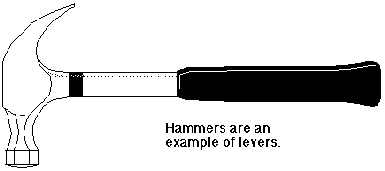Levers
by Jimmy and Xiao Kai
A lever is a type of simple machine, that makes jobs easier. The lever rests on a fulcrum. This is the pivot point that allows the fulcrum to tilt to the heavier side, when there is uneven weight. The load is the amount of weight that is put on one side, and this amount makes the lever tilt to a heavier side. The effort is the amount of weight added to the other side of the lever, which allows the lever to balance. Balance means that the weight on each side of the lever equals out, and the lever becomes straight.
Things like hand carts, scissors, pliers, and nail extravagators are all examples of First Class Levers. Examples of second class levers would be wheelbarrows, and bottle openers. Hammers, tweezers, and fishing rods are all examples of third class levers. There are three different classes of levers. First Class levers, Second Class Levers, and Third Class Levers. The third class levers are more superior than the more simple levers.


